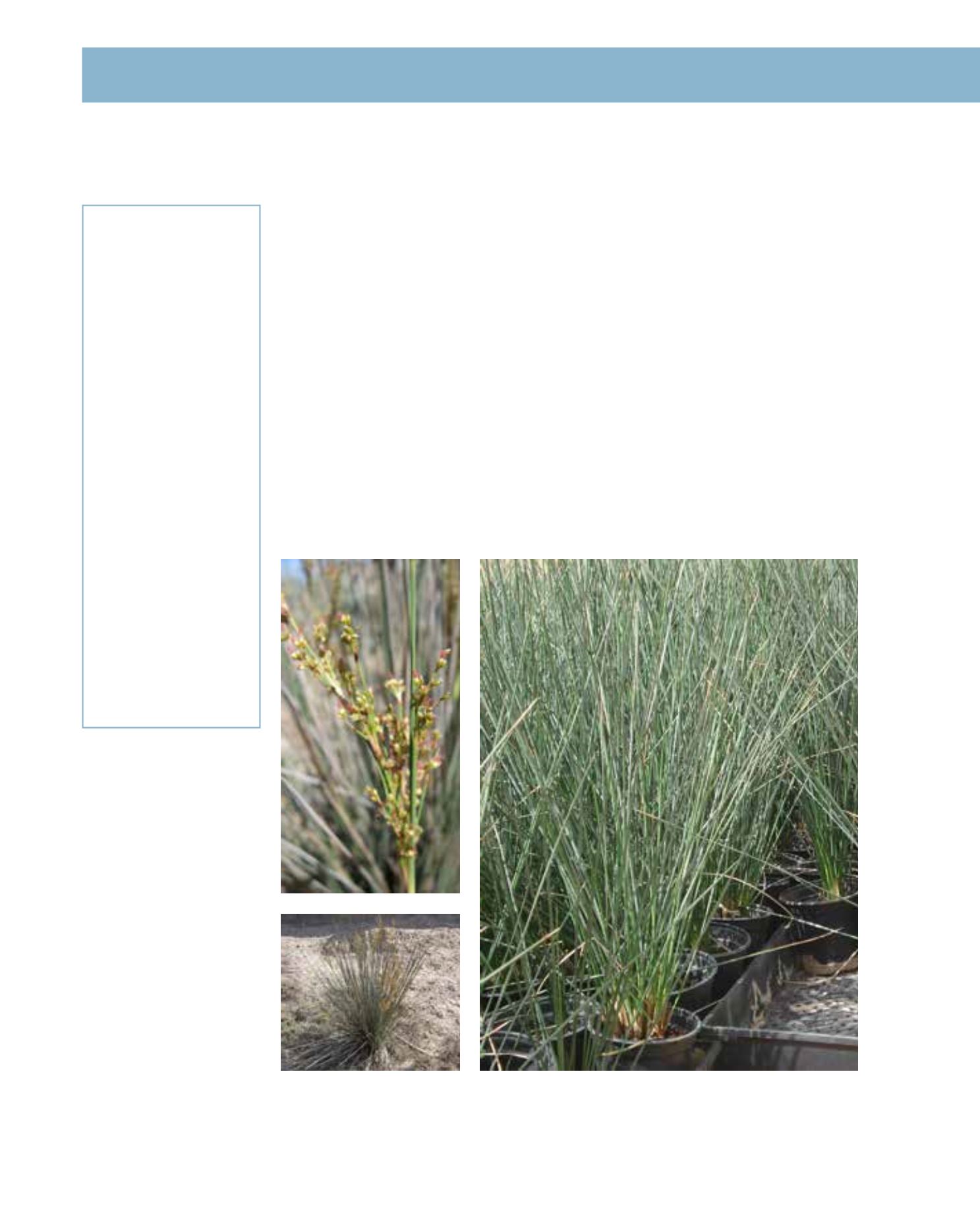

GENERAL
Origin
:
sub-tropical,
tropical
Humidity
:
semi-humid, very
humid, extremely
humid
Propagation :
division, sowing
and pricking out
Maintenance :
low
CONDITIONS
Urban climate :
resistant
Dessication :
vulnerable
Stagnant water :
resistant
Irrigation
:
high
Salinity/ppm :
very high (20000
ppm)
Hardiness
:
-3°C
SHAPE
Type
:
perennial
Height
:
1 m
Spread
:
0.8 m
Foliage
:
evergreen
FLOWER
Colour
:
light brown
Size
:
20 cm
Period
:
January -
December
FRUIT
Type of fruit :
capsule
Fruit size
:
0.5 cm
This is a dense, perennial rush, known in Arabic as sammar or nammas, which grows in tufts
on saline ground in many parts of the Kingdom. These rushes are distributed throughout many
parts of Europe, Africa and the Middle East. Their habitats are salt marshes, poorly drained soils
around water runoffs and permanently wet depressions, as well as the margins of watercourses
and drainage channels. They grow to a height of 1 metre with a creeping rhizome and numerous
rigid, slender and pungent stems. The pale-green leaves are sharply pointed, and mostly parallel.
Panicles of numerous, small, beige flowers up to 20 cm long appear almost throughout the year.
The capsules contain many seeds, which have whitish tails. J. rigidus prefers moist, silty soils and
has a very high salt tolerance. Propagation is by seed and division. It is used as a material for
making mats and is only occasionally grazed, if ever. This rush can be used for landscape purpo-
ses in extensive schemes, where the banks of lakes or watercourses need stabilisation. It is a very
hardy plant, requiring little maintenance, although care should be taken that it does not become
invasive. It is at its best near running water, but dead leaves should be removed when it is used in
a garden around a pond.
175
Juncus rigidus,
Juncaceae
Sea Rush,
sammar, nammas
















